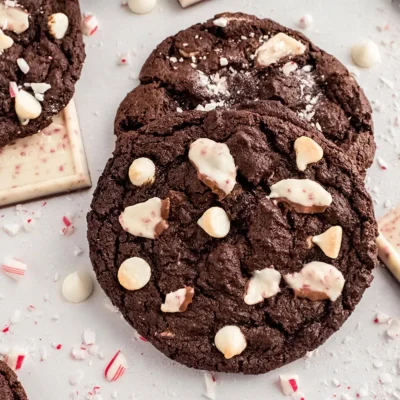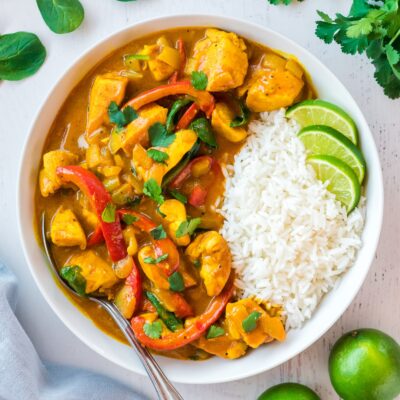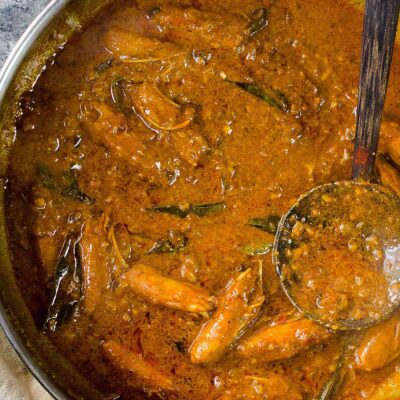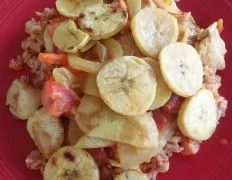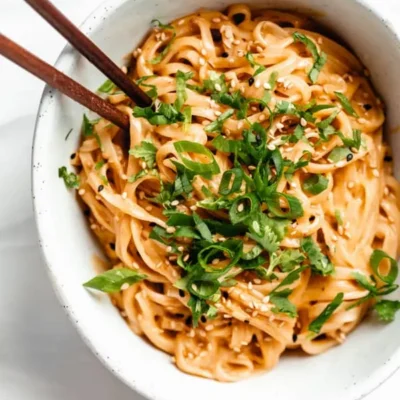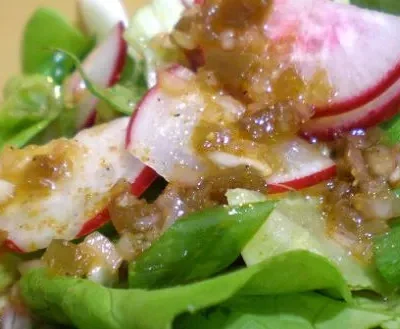Ingredients
-
2
-
2
-
4 - 5
-
3
-
1
-
1
-
1/4
-
1
-
350
-
150
-
-
-
-
-
Directions
Malaysian-Indian Dalcha,This recipe originates from South India and was taken by Muslim immigrants to Malaysia. It is a wonderfully warming and nourishing lentil and vegetable curry with a tantalising flavour, but with such a long list of ingredients, I fear that few will attempt to make it. Pottering around in the kitchen preparing, then eating, this, is my idea of heaven, and I love to serve it to guests. The original recipe suggests using half and half toor (toovar) and chana dal, but I prefer to use a greater proportion of toor dal. It is possible to use Australian yellow split peas in place of the dals. Adjust the number of chillies to suit your taste.,used yellow split peas and followed the recipe except for adding extra ghee at the end. It’s not the prettiest dish–kind of a greenish yellowish mass–but it is delicious. I particularly liked the chunks of eggplant combined with the dal.,This recipe originates from South India and was taken by Muslim immigrants to Malaysia. It is a wonderfully warming and nourishing lentil and vegetable curry with a tantalising flavour, but with such a long list of ingredients, I fear that few will attempt to make it. Pottering around in the kitchen preparing, then eating, this, is my idea of heaven, and I love to serve it to guests. The original recipe suggests using half and half toor (toovar) and chana dal, but I prefer to use a greater proportion of toor dal. It is possible to use Australian yellow split peas in place of the dals. Adjust the number of chillies to suit your taste.
Discover ground-breaking new supplements! SHOP & SAVE
Steps
|
1
Done
|
Soak the Cashews and Almonds in 4 Oz Water Overnight or For at Least Four Hours. Blend the Nuts and Liquid in an Electric Blender Until Smooth, Remove to a Bowl and Set Aside. |
|
2
Done
|
Rinse the Blender Container With Water Before Blending the Garlic and Ginger With Two Tablespoons Water Until Smooth. Set Aside. |
|
3
Done
|
Using an Electric Spice or Coffee Grinder, Grind the Coriander, Cumin and Fennel Seeds as Finely as Possible, Then Set Aside. |
|
4
Done
|
Combine the Two Dals in a Bowl and Wash in Several Changes of Water. Drain and Place in a Large Lidded Pan With 7 Cups Water and Bring to the Boil. With a Slotted Spoon Skim Off Any Scum That Rises to the Surface, Then Add the Turmeric and Stir. Partially Cover the Pan With Its Lid, Then Reduce Heat to Low. Simmer Gently Until the Dal Is Tender, Then Remove from Heat and Set Aside. This Should Take Around 30 to 40 Minutes, Although If Using Australian Yellow Split Peas It May Take Up to 1 1/4 Hours. |
|
5
Done
|
Heat the Oil or Ghee in a Large, Preferably Non-Stick, Lidded Pan. When Hot Add the Cinnamon, Cardamom Pods and Cloves. Stir Once Then Add the Sliced Onion, and Saute and Stir For 4 - 5 Minutes Until the Onion Softens and Begins to Brown. |
|
6
Done
|
Add the Chopped Mint and Stir Once Before Adding the Aubergine and Potato. Stir For 2 Minutes. |
|
7
Done
|
Next Add the Garlic-Ginger Paste and Cook, Stirring, For a Minute. |
|
8
Done
|
Add the Cooked Dal, Coconut Milk, 2 Cups Water, the Ground Spices and Salt, and Simmer Very Gently, Partially Covered With the Lid, For 30 Minutes. |
|
9
Done
|
Finally, Stir in the Nut Paste, Tomato, Tamarind Paste and Chillies and Simmer Gently, Uncovered, For 10 Minutes. the Consistency Should Be Quite Thick - Add a Little Water If You Feel It Is Too Thick. |
|
10
Done
|
For a Special Treat, You Can Melt Extra Ghee and Pour Over the Top of the Curry Before Serving. |





